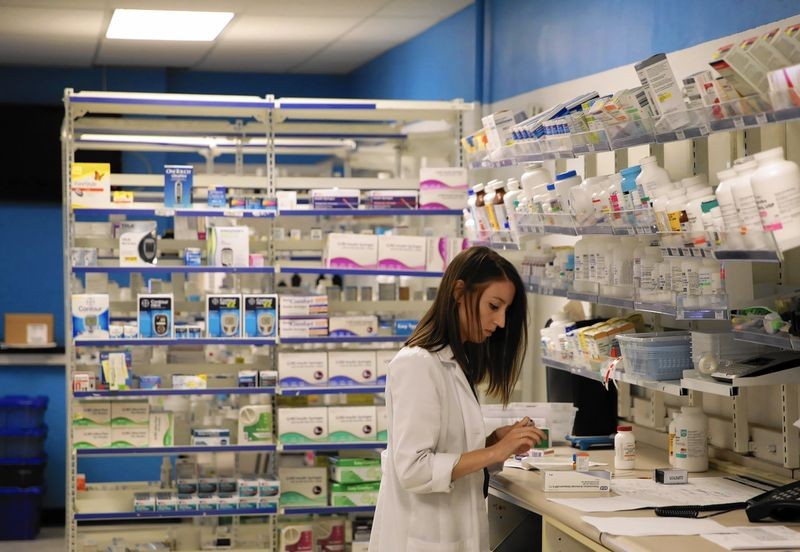
CDC Director Dr. Robert Redfield offered in August a grim outlook in an already catastrophic year, declaring the potential for this to be “the worst fall, from a public health perspective, we’ve ever had.”
The 2020-2021 flu season will strain the country’s healthcare system, disproportionately impacting frontline providers already struggling to recover from a slew of changes brought on by the emergence of COVID-19. While pharmacies, in particular, have experienced a number of virus-related upheavals, shrewd retail pharmacies have nimbly adapted and turned learnings into meaningful change.
If the adage “success is where preparation and opportunity meet” rings true, for the following five reasons, retail pharmacies are poised to provide the highest level of quality care and help see patients through an unprecedented season.
1. Drug Shortages
Vulnerabilities in the drug supply chain existed long before this year, but COVID-19 laid bare its weaknesses. With the large majority of ingredients used in stateside drug manufacturing coming from China, the viruses’ country of origin, drug shortages occurred abruptly and caused ripple effects felt throughout the healthcare system. As the virus spread and lockdowns loomed, consumers scrambling to claim their prescriptions were often left shorthanded.
Determined not to experience a second shortage with the arrival of season flu, the CDC this year called on drug makers to ramp up flu vaccine production. Manufacturers responded by increasing the number of vaccines created by roughly 25 million compared to last year. For their part, astute pharmacies ensured they ordered an abundant supply.
2. Telehealth
With nonessential personnel ordered to stay at home to “flatten the curve,” and physicians cancelling non-urgent in-person appointments, individuals turned to technology to receive care. Due to the combination of removing barriers around the cost for virtual care, and relaxed restrictions on allowable devices used in physician-patient interactions, telehealth soared. In March alone, virtual visits jumped 50%.
Language provided by the Administration and CMS encouraging the use of telehealth called for virtual care provided by “clinicians,” a term that includes pharmacists. As integral members of virtual care teams, the onus landed on pharmacists to determine how to implement the use of telemedicine out of necessity and patient demand.
The push for telehealth adoption came at a time when some of the country’s largest retailers had already expanded their footprint in virtual care. In 2017, Publix teamed up with Florida’s BayCare Health System to add walk-in telehealth kiosks adjacent to several of its in-store pharmacies. It then replicated the collaboration with Flagler Health+, adding telehealth sites to more of its super markets across the state. Giant Eagle, Walmart and Walgreens have similar partnerships.
Large retail pharmacies are well positioned to provide patient counsel and care over the coming months as the use of telemedicine is expected to rise in conjunction with seasonal flu.
3. Prescription Delivery
Along with telehealth, a jump in delivery of prescription medications was a direct result of the emergence and spread of COVID-19. Offering a convenient and contactless way to obtain needed drugs, mail order prescriptions increased more than 20% year-over-year during the last week of March.
While a slew of startups offering prescription delivery surfaced during this period, major retailers had already honed in on the offering. One of the more innovative partnerships bringing prescriptions to people’s homes kicked off in April between Costco and Instacart. A familiar name in grocery delivery, the news was unsurprising given Costco already played in the pharmacy space. Individuals began utilizing grocery delivery at an unprecedented level at the height of the pandemic, and having their medications dropped at their door was a natural next step.
4. Testing
As awareness of the Coronavirus, its symptoms and the ease with which it is spread became widely known, the number of Americans seeking testing for the virus climbed. With emergency departments strained and under a mountainous backlog of samples, drive through testing sites began popping up in parking lots.
Large retail pharmacies were among the first to answer the call for mass testing which involved nasal swabs administered to individuals while remaining in their vehicles. Walgreens and CVS led their peers in getting sites up and running expeditiously. In April, CVS announced it planned to process as many as 1.5 million tests monthly at nearly 1,000 sites. Walgreens planned an ambitious footprint, expecting to establish sites in nearly every U.S. state. While site openings were delayed or halted due to inability to obtain personal protective equipment and disagreements about operational oversight, testing sites housed in retail pharmacy parking lots are partially credited with providing a more accurate view of infection rates.
Pharmacies’ experience preparing for atypical patient volumes earlier this year will lend itself well to a potential second rush of activity when consumers seek flu vaccines this fall. According to the CDC, nearly half of Americans got a flu shot last year. That percentage will likely climb this fall for several reasons. On top of a greater number of vaccines being created and dispersed to providers, new immunization mandates are being made, such as the one Massachusetts officials declared requiring all children older than six months attending child care and school have a flu vaccine. There’s also an earlier, more concerted push by health officials and pharmacies to educate the public on the flu vaccine and encourage individuals to get vaccinated early.
5. Technology
Pharmacy has traditionally been slow to adopt technology compared with other sectors of healthcare. The resistance towards tech has eased in recent years, however, as pharmacists have increasingly been considered part of the care continuum and faced mounting pressure to prioritize value over volume.
Large retail pharmacies, including Publix, which was recognized earlier this year for its exceptional pharmacy operations, have done an exemplary job of embracing technology and using it to improve care. In addition to the innovative partnerships already mentioned, pharmacies are exploring how integrating tech into daily operations can automate manual tasks like inventory management to ensure compliance while freeing up pharmacists’ time. Pharmacies that already have this manner of tech in place, including the two major retail pharmacies that partnered with OrderInsite in 2020, will have a leg up this fall.


